Welcome to Visit Shanghai Places
The Walkfo guide to things to do & explore in Shanghai
![]() Visit Shanghai places using Walkfo for free guided tours of the best Shanghai places to visit. A unique way to experience Shanghai’s places, Walkfo allows you to explore Shanghai as you would a museum or art gallery with audio guides.
Visit Shanghai places using Walkfo for free guided tours of the best Shanghai places to visit. A unique way to experience Shanghai’s places, Walkfo allows you to explore Shanghai as you would a museum or art gallery with audio guides.
Visiting Shanghai Walkfo Preview
Shanghai is one of the four direct-administered municipalities of the People’s Republic of China. The city is located on the southern estuary of the Yangtze River, with the Huangpu River flowing through it. With a population of 24.28 million as of 2019, it is the most populous urban area in China and the third most populous city proper in the world. The Port of Shanghai is the world’s busiest container port. When you visit Shanghai, Walkfo brings Shanghai places to life as you travel by foot, bike, bus or car with a mobile phone & headphones.
Shanghai Places Overview: History, Culture & Facts about Shanghai
Visit Shanghai – Walkfo’s stats for the places to visit
With 57 audio plaques & Shanghai places for you to explore in the Shanghai area, Walkfo is the world’s largest heritage & history digital plaque provider. The AI continually learns & refines facts about the best Shanghai places to visit from travel & tourism authorities (like Wikipedia), converting history into an interactive audio experience.
Shanghai history
Ancient history
The western part of modern-day Shanghai was inhabited 6000 years ago. During the Warring States period (475 BC), Shanghai was part of the fief of Lord Chunshen of Chu. He ordered the excavation of the Huangpu River, giving Shanghai its nickname of “Shēn” Fishermen living in the Shanghai area created a fish tool called the hù, which lent its name to the outlet of Suzhou Creek north of the Old City.
Imperial history

During the Tang and Song dynasties, Shanghai was a major trading port. Established in 746 (the fifth year of the Tang Tianbao era), it developed into what historically called a “giant town of the Southeast” The port experienced thriving trade with provinces along the Yangtze and the Chinese coast, as well as with foreign countries such as Japan and Silla.
Rise and golden age
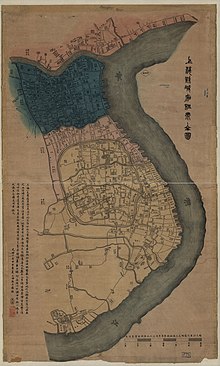
In the 19th century, international attention to Shanghai grew due to European recognition of its economic and trade potential at the Yangtze. During the First Opium War (1839–1842), British forces occupied the city. Britain, France, and the United States all established a presence outside the walled city of Shanghai. The city flourished, becoming a primary commercial and financial hub of the Asia-Pacific region in the 1930s.
Japanese invasion

On 28 January 1932, Japanese forces invaded Shanghai while the Chinese resisted. In 1937, the Battle of Shanghai resulted in the occupation of the Chinese-administered parts of Shanghai outside of the International Settlement and the French Concession. The foreign concessions were ultimately occupied by the Japanese on 8 December 1941 and remained occupied until Japan’s surrender in 1945. A side-effect of the Japanese invasion of Shanghai was the Shanghai Ghetto. By 1957, there were only one hundred Jews remaining in Shanghai.
Modern history

After the war, Shanghai’s economy was restored—from 1949 to 1952, the city’s agricultural and industrial output increased by 51.5% and 94.2%. As the industrial center of China with the most skilled industrial workers, Shanghai became a center for radical leftism during the 1950s and 1960s. As of 2020, Shanghai is classified as an Alpha+ city by the Globalization and World Cities Research Network, making it one of the world’s Top 10 major cities.
Shanghai culture & places
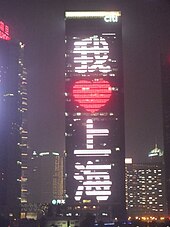
The culture of Shanghai was formed by a combination of the nearby Wuyue culture and the “East Meets West” Haipai culture. Shanghai has been recognized as a new influence and inspiration for cyberpunk culture.
Museums
Shanghai has one of the largest collections of Chinese artifacts in the world. The China Art Museum is located in the former China Pavilion of Expo 2010. The Shanghai Natural History Museum and the Shanghai Science and Technology Museum are notable natural history and science museums. The Songze Museum is housed in important archeological and historical sites.
Cuisine
Benbang cuisine is cooking style that originated in the 1600s, with influences from surrounding provinces. Haipai cuisine, on the other hand, is a Western-influenced cooking style. Famous dishes include Shanghai-style borscht, crispy pork cutlets, and Shanghai salad derived from Olivier salad.
Arts
Western art was introduced to Shanghai in 1847 by Spanish missionary Joannes Ferrer. Songjiang School was an expansion of the Wu School in Suzhou, the cultural center of the Jiangnan region at the time. During the Republic of China, many famous artists including Zhang Daqian, Liu Haisu, Xu Beihong, Feng Zikai, and Yan Wenliang settled in Shanghai.
Fashion
Since 2001, Shanghai has held its own fashion week called Shanghai Fashion Week twice every year in April and October. The main venue is in Fuxing Park, and the opening and closing ceremonies are held in the Shanghai Fashion Center. The April session is also part of the one-month Shanghai International Fashion Culture Festival.
Shanghai economy & business
Finance

Shanghai is a global financial center, ranking third (after New York and London) in the 28th edition of the Global Financial Centres Index (ranking first in whole Asia and the Pacific) As of 2019, the Shanghai Stock Exchange had a market capitalization of US$4.02 trillion. In September 2013 with the backing of Chinese Premier Li Keqiang, the city launched the China (Shanghai) Pilot Free-Trade Zone—the first free-trade zone in mainland China.
Manufacturing
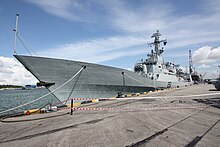
Shanghai plays a key role in domestic manufacturing and heavy industry. Several industrial zones are backbones of Shanghai’s secondary sector. Shanghai is home to China’s largest steelmaker Baosteel Group and one of China’s oldest shipbuilders.
Tourism
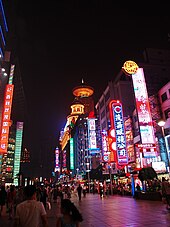
Tourism is a major industry of Shanghai. In 2017, the number of domestic tourists increased by 7.5% to 318 million. As of 2019, the city had 71 five star hotels, 61 four star hotels and 1,758 travel agencies.
Free-trade zone
Shanghai is home to China (Shanghai) Pilot Free-Trade Zone, the first free-trade zone in mainland China. As of October 2019, it is also the second largest free trade zone in China in terms of land area (behind Hainan Free Trade Zone)
Shanghai etymology
The two Chinese characters in the city’s name are 上 (shàng/zan, “upon”) and 海 (hǎi/hae, “sea”), together meaning “Upon the Sea” The earliest occurrence of this name dates from the 11th-century Song dynasty. Shanghai is officially abbreviated 沪 (Hù/Vu) in Chinese.
Alternative names
The city has various nicknames in English, including “Pearl of the Orient” and “Paris of the East” The name was first mentioned in Shōfu Muramatsu’s 1924 novel Mato, which portrayed Shanghai as a dichotomic city.
Shanghai geography / climate
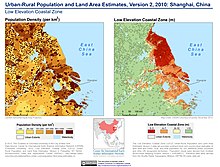
Shanghai is located on the Yangtze Estuary of China’s east coast. It is roughly equidistant from Beijing and Guangzhou, bordering the East China Sea to the east, Zhejiang to the south, and Jiangsu to the west and north. The municipality’s northernmost point is on Chongming Island, which is the second-largest island in mainland China after its expansion during the 20th century.
Climate
Shanghai has a humid subtropical climate, with an average annual temperature of 15.8 °C for urban districts and 15.2–15.7 °C (59.4–60.3 °F) for suburbs. Winters are temperate to cold and damp; each year there are 6.2 days with snowfall and 2.8 with snow cover. Summers are hot and humid, and occasional downpours or freak thunderstorms can be expected. In summer and the beginning of autumn, the city is susceptible to typhoons.
Why visit Shanghai with Walkfo Travel Guide App?
![]() You can visit Shanghai places with Walkfo Shanghai to hear history at Shanghai’s places whilst walking around using the free digital tour app. Walkfo Shanghai has 57 places to visit in our interactive Shanghai map, with amazing history, culture & travel facts you can explore the same way you would at a museum or art gallery with information audio headset. With Walkfo, you can travel by foot, bike or bus throughout Shanghai, being in the moment, without digital distraction or limits to a specific walking route. Our historic audio walks, National Trust interactive audio experiences, digital tour guides for English Heritage locations are available at Shanghai places, with a AI tour guide to help you get the best from a visit to Shanghai & the surrounding areas.
You can visit Shanghai places with Walkfo Shanghai to hear history at Shanghai’s places whilst walking around using the free digital tour app. Walkfo Shanghai has 57 places to visit in our interactive Shanghai map, with amazing history, culture & travel facts you can explore the same way you would at a museum or art gallery with information audio headset. With Walkfo, you can travel by foot, bike or bus throughout Shanghai, being in the moment, without digital distraction or limits to a specific walking route. Our historic audio walks, National Trust interactive audio experiences, digital tour guides for English Heritage locations are available at Shanghai places, with a AI tour guide to help you get the best from a visit to Shanghai & the surrounding areas.
“Curated content for millions of locations across the UK, with 57 audio facts unique to Shanghai places in an interactive Shanghai map you can explore.”
Walkfo: Visit Shanghai Places Map
57 tourist, history, culture & geography spots
Shanghai historic spots | Shanghai tourist destinations | Shanghai plaques | Shanghai geographic features |
| Walkfo Shanghai tourism map key: places to see & visit like National Trust sites, Blue Plaques, English Heritage locations & top tourist destinations in Shanghai | |||
Best Shanghai places to visit
Shanghai has places to explore by foot, bike or bus. Below are a selection of the varied Shanghai’s destinations you can visit with additional content available at the Walkfo Shanghai’s information audio spots:
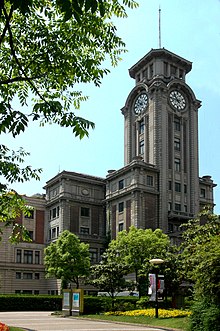 | Shanghai Race Club The Shanghai Race Club was a horse racing club located in Shanghai, China. It was originally the Race Committee of the International Recreation Club. In 1862, it detached itself from the Shanghai Recreation Club to become an independent body. The Club’s activities were affected by the Second Sino-Japanese War and the Chinese Civil War. |
 | Great World Great World was the first and for a long time the most influential indoor amusement arcade in Shanghai. It was closed in 2003 due to an outbreak of the SARS epidemic, and reopened at its centennial after repairs, in March 2017. |
 | People’s Square People’s Square is a large public square in the Huangpu District of Shanghai. It is south of Nanjing Road (West) and north of Huaihai Road (East) It is the site of Shanghai’s municipal government headquarters building. |
 | Dashijie station Dashijie is a station on Shanghai Metro Line 8. It began operation on December 29, 2007. The station is linked to an underground shopping complex containing a McDonald’s and other fast food outlets. |
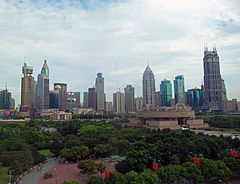 | People’s Park (Shanghai) People’s Park is a public park in Huangpu District of central Shanghai. It is located south of Nanjing Road, a major shopping street, and north of People’s Square. Originally the northern part of the Shanghai Race Club’s race course, it was created in 1952. |
 | JW Marriott Shanghai The JW Marriott Hotel Shanghai is a flagship hotel of the Marriott Group in Shanghai, China. The hotel is located in the city of Shanghai. |
 | Park Hotel Shanghai Park Hotel is an Art Deco hotel on Nanjing Road West, Shanghai, China. It was the tallest building in Asia from its completion in 1934 to 1963. |
 | Shanghai Urban Planning Exhibition Center The Shanghai Urban Planning Exhibition Center is a six-story building, with two basement levels. It is located on People’s Square, Shanghai, adjacent to the municipal government building. The exhibit is a large scale model of the entirety of urban Shanghai. |
 | Dajing Ge Pavilion The Dàjìng Gé Pavillon is a museum and ancient temple of Shanghai. Most of the walls were dismantled in 1912, and today only this portion remains. The building houses a temple and a small museum with photographs of ancient Shanghai. |
 | Shanghai Grand Theatre The Shanghai Grand Theater is one of the largest and best-equipped automatic stages in the world. The theater opened on August 27, 1998. It has staged over 6,000 performances of operas, musicals, ballets and symphonies. |
Visit Shanghai plaques
![]() 0
0
plaques
here Shanghai has 0 physical plaques in tourist plaque schemes for you to explore via Walkfo Shanghai plaques audio map when visiting. Plaques like National Heritage’s “Blue Plaques” provide visual geo-markers to highlight points-of-interest at the places where they happened – and Walkfo’s AI has researched additional, deeper content when you visit Shanghai using the app. Experience the history of a location when Walkfo local tourist guide app triggers audio close to each Shanghai plaque. Currently No Physical Plaques.